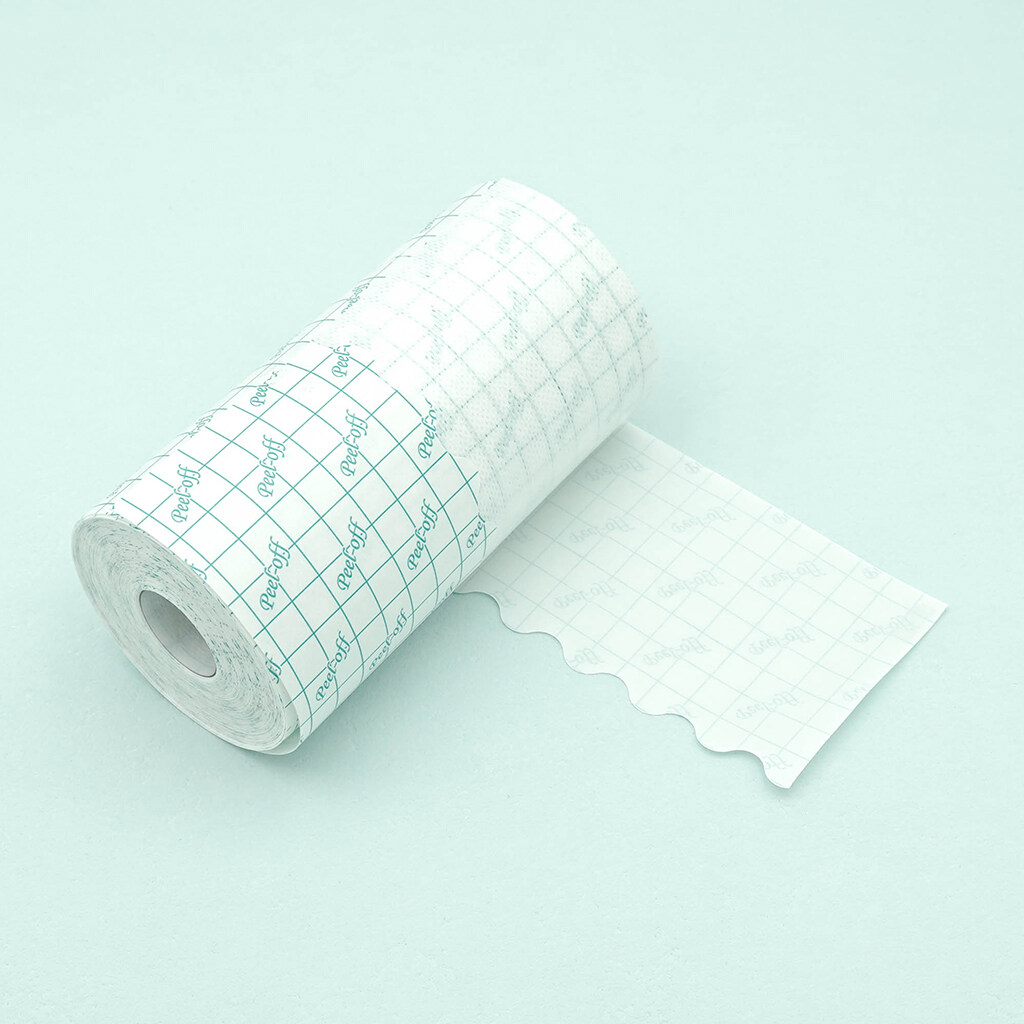Email cannot be empty
Password cannot be empty
Email format error
Email cannot be empty
Email already exists
6-20 characters(letters plus numbers only)
The password is inconsistent
Email format error
Email cannot be empty
Email does not exist
6-20 characters(letters plus numbers only)
The password is inconsistent


The Importance of Retention Tape Dressing in Modern Wound Care
When it comes to wound care, modern medicine has made significant strides, offering innovative solutions that greatly enhance patient comfort and recovery. One such advancement that has gained popularity in recent years is the use of retention tape dressing. This simple yet effective tool plays a crucial role in ensuring that dressings stay in place, providing a secure environment for wounds to heal properly. In this blog post, we'll explore the importance of retention tape dressing, its benefits, and why it has become an essential part of wound care management.
The Role of Dressings in Wound Healing
Before diving into the specifics of retention tape dressing, it’s important to understand the critical role that dressings play in wound care. Wound dressings are designed to protect the wound from external contaminants, absorb exudate (the fluid that leaks from wounds), and maintain a moist environment that promotes healing. They also help in reducing pain and minimizing the risk of infection.
However, the effectiveness of any dressing is highly dependent on how well it stays in place. A dressing that shifts or falls off can expose the wound to bacteria, disrupt the healing process, and cause additional discomfort to the patient. This is where retention tape dressing comes into play.
What is Retention Tape Dressing?
Retention tape dressing is a specialized adhesive tape used to secure wound dressings in place. Unlike regular adhesive tapes, retention tape is designed specifically for medical use, making it safe for contact with the skin. It is typically made from soft, flexible materials that conform to the contours of the body, allowing for a secure fit without restricting movement or causing discomfort.
One of the key features of retention tape dressing is its hypoallergenic properties. This means that it is less likely to cause allergic reactions, making it suitable for individuals with sensitive skin. Additionally, it is breathable, allowing air to circulate around the wound, which is essential for proper healing.
The Benefits of Retention Tape Dressing
1. Enhanced Stability
One of the primary benefits of using retention tape dressing is the enhanced stability it provides. When applied correctly, retention tape ensures that the wound dressing remains securely in place, even in areas that are prone to movement, such as joints or areas with high friction. This stability is crucial in preventing the dressing from shifting, which can lead to complications such as wound contamination or delayed healing.
2. Comfort and Flexibility
Retention tape dressing is designed with patient comfort in mind. Its flexible nature allows it to move with the body, reducing the risk of discomfort or irritation. This is particularly important for patients who need to wear dressings for extended periods. Whether the wound is on a joint or another area that experiences frequent movement, retention tape can adapt to the body's movements, ensuring that the dressing stays in place without causing pain or discomfort.
3. Hypoallergenic and Skin-Friendly
For patients with sensitive skin, finding a suitable adhesive can be challenging. Retention tape dressing is often hypoallergenic, meaning it is less likely to cause skin reactions such as redness, itching, or rash. This makes it an ideal choice for patients with delicate or reactive skin. Additionally, the gentle adhesive used in retention tape dressing is designed to be removed without causing damage to the skin, which is especially important for elderly patients or those with fragile skin.
4. Breathability
Wound healing is a delicate process that requires a balance between moisture and air exposure. Retention tape dressing is designed to be breathable, allowing air to reach the wound while still protecting it from contaminants. This breathability helps to maintain an optimal healing environment, reducing the risk of maceration (when the skin becomes overly saturated with moisture) and promoting faster recovery.
5. Versatility
Retention tape dressing is incredibly versatile and can be used in a variety of wound care scenarios. Whether you're dealing with a minor cut, a surgical incision, or a more complex wound, retention tape can be adapted to secure the dressing effectively. It can be used on almost any part of the body, making it a go-to solution for healthcare providers and caregivers alike.
How to Apply Retention Tape Dressing
While retention tape dressing is straightforward to use, proper application is essential to ensure that it provides the maximum benefit. Here’s a step-by-step guide on how to apply retention tape dressing effectively:
Step 1: Prepare the Area
Before applying the retention tape, make sure the skin around the wound is clean and dry. This will help the tape adhere better and reduce the risk of infection. If the skin is particularly oily, you may want to gently cleanse it with a mild soap or alcohol swab.
Step 2: Position the Dressing
Place the wound dressing over the wound, ensuring that it completely covers the area. The dressing should extend slightly beyond the edges of the wound to provide full coverage and protection.
Step 3: Apply the Retention Tape
Cut a piece of retention tape that is long enough to secure the dressing in place. Gently place the tape over the edges of the dressing, pressing down to ensure it adheres to the skin. Be careful not to apply the tape too tightly, as this could restrict blood flow and cause discomfort. If the wound is in a high-movement area, such as a joint, you may need to apply additional strips of tape to ensure the dressing stays in place.
Step 4: Check for Comfort
Once the retention tape dressing is in place, check to make sure it feels comfortable and secure. The dressing should stay in place during movement without causing any irritation or discomfort. If needed, adjust the tape or add extra strips to ensure a secure fit.
Step 5: Monitor the Wound
Regularly check the wound and the dressing to ensure that everything is healing properly. If the dressing becomes loose or starts to peel away, replace the retention tape promptly to maintain a secure environment for healing.
Common Misconceptions About Retention Tape Dressing
Despite its many benefits, there are some common misconceptions about retention tape dressing that can lead to improper use or avoidance. Let’s address a few of these myths:
Myth 1: Retention Tape Dressing is Only for Major Wounds
Some people believe that retention tape dressing is only necessary for large or severe wounds. In reality, it can be beneficial for wounds of all sizes. Even small cuts or abrasions can benefit from the added stability and protection that retention tape provides. By keeping the dressing in place, retention tape helps to prevent contamination and promotes faster healing, regardless of the wound's size.
Myth 2: It’s Difficult to Apply
Another misconception is that retention tape dressing is difficult to apply, particularly for those who are not trained medical professionals. However, as outlined in the step-by-step guide above, applying retention tape is actually quite simple. With a little practice, anyone can learn to use it effectively, making it a valuable tool for home care as well as in clinical settings.
Myth 3: Retention Tape is Painful to Remove
Some patients worry that removing retention tape will be painful, especially if it has been in place for an extended period. While it's true that some types of adhesive tapes can be uncomfortable to remove, retention tape dressing is designed to be gentle on the skin. When removed carefully, it should not cause significant discomfort or damage to the skin. If pain or irritation occurs, using a skin adhesive remover can help ease the process.
The Future of Wound Care: Why Retention Tape Dressing Matters
As medical technology continues to evolve, so too does the field of wound care. Retention tape dressing represents a step forward in this evolution, offering a simple yet highly effective solution for securing dressings and promoting optimal healing conditions. Its benefits are clear: enhanced stability, comfort, versatility, and skin-friendliness make it an invaluable tool in both professional healthcare settings and at home.
The importance of retention tape dressing cannot be overstated, especially in situations where proper wound care is critical to recovery. Whether you’re caring for a loved one at home or managing wounds in a clinical environment, understanding the value of retention tape dressing can make a significant difference in the healing process.
In conclusion, retention tape dressing is more than just a way to keep a dressing in place; it's a vital component of modern wound care that enhances healing, reduces the risk of complications, and improves patient comfort. By incorporating retention tape dressing into your wound care routine, you can ensure that wounds are protected, secure, and given the best possible environment to heal.

